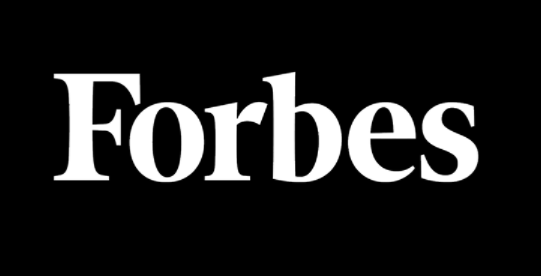In this Part II of a two-part series, we identify systemic problems with the current institutions that fund venture capital (VC) groups and propose how to change this archaic system. This builds off of Part Iwhere we discussed the gender disparities in venture capital, and how solving for those issues creates great financial opportunities for investors, as well as assuring our country’s economic competitiveness.
In Part I of our series, we talked about the value of women investing in women-run VCs as a first step towards fixing the gender imbalance of the 99% male “true VCs” in venture capital – and there by unlocking the higher financial returns of women-led companies. Although this is where we see the beginning of the solution from our personal experience at True Wealth Ventures, individual investors alone can’t move the needle far enough. This Part II delves into what it is really going to take to achieve industry-wide change, which is not being discussed amidst all of the “lack of women” in VC.
 Ellen Pao, chief diversity and inclusion officer at the Kapor Center for Social Impact, speaks during a Bloomberg Television interview in San Francisco, California, U.S., on Monday, Sept. 25, 2017. Pao discussed Silicon Valley’s gender diversity issues. Photographer: David Paul Morris/Bloomberg
Ellen Pao, chief diversity and inclusion officer at the Kapor Center for Social Impact, speaks during a Bloomberg Television interview in San Francisco, California, U.S., on Monday, Sept. 25, 2017. Pao discussed Silicon Valley’s gender diversity issues. Photographer: David Paul Morris/Bloomberg
The vast majority of investment dollars in the venture capital industry come from “institutional investors.” These are organizations such as pension funds, university and nonprofit endowments, foundations and other financial institutions. They deploy capital as limited partners (LPs)to venture capital funds’ general partners (GPs) to invest in early stage,high growth companies to earn an investment return. According toPitchBook data, last year institutional investors accounted for 75% of allU.S. VC deal flow versus family offices. The current investment policies of these institutions perpetuate a cycle of investing that not only immortalizes the gender imbalance , but also results in missing out on the financial outperformance of first-time, smaller and diverse VC funds.
Because institutional investors are fiduciaries of other parties’ money they, understandably, have strict policies around how they choose fundGPs. These large LPs face limited manpower to execute due diligence(sometimes one person per billion dollars under management), making ongoing relationship management for each individual investment challenging while deploying large pools of capital.
Therefore, they generally set a minimum investment size in the tens or even hundreds of millions, and often don’t want to or cannot be more than a certain percentage of a given fund (to avoid taking a controlling interest). This means they don’t even consider smaller funds (e.g., less than $100M), and most first-time funds are smaller. (Note: This is partly due to a chicken-and-egg situation of these institutional investors not investing in smaller funds and an SEC limit of a maximum of 99accredited investors per fund, regardless of investment size.)
According to Preqin data , the ability to predict future fund performance based on historical performance has not panned out. In fact, over 15years (2000-2014), the data has demonstrated the outperformance of first-time funds in comparison to legacy funds.
In practice though, these institutions typically invest in a small group of established funds because they can point to the fund’s reputation and past performance. In other words, they only invest in the same fund managers and well-known funds which is currently estimated to be 99% male VCs. When they do consider first-time funds, they traditionally require what’s known as an “attributable exited track record” of returns.Which translates to GPs who’ve already worked at prior firms as the investment decision-makers and long enough for the underlying portfolio companies to have been acquired or IPO’d (traditional funds are 10-12 years long to accommodate for the time it takes for the portfolio companies to exit.) Do you see the conundrum? With only 1%of the investment decision-making VCs in the industry being women, that makes for very few who can spin out to form a new firm and qualify under these criteria. Not to mention that the institutions also want the partners of the new firm to also have worked together for a significant tenure at a prior fund.

These factors all compound to inhibit new and diverse GPs from entering the venture capital sector at any scale. Unfortunately, even the institutional investors who have “emerging manager” or “minority manager” programs have these challenging fund size and track record restrictions. If institutional investors don’t change their approach, the current gender imbalance won’t change for decades — and these institutions will continue to miss out on the financial benefits of diversity. This is a missed financial opportunity since the data shows that newer funds, smaller funds, and investments in women-led companies (in which gender diverse GPs tend to invest), all outperform.
So, what do we propose these institutional investors do?
- First, truly engage in programs focused on new and diverse managers by dedicating resources to diligence and invest smaller size checks into newer, smaller, and more diverse funds. Their resulting return rates should be higher, and by helping to scale these funds, they can help grow these financially outperforming opportunities.
- Incorporate a new set of criteria to assess the viability of the new firms’ GPs (beyond exited track record.) These criteria should include the GPs technical, operational and entrepreneurial accomplishments, which may have better correlations with choosing successful portfolio companies and supporting them to a successful exit.
- Challenge established VC funds by demanding more transparency from all GPs into their diversity strategy — such as requiring performance metrics on the gender impact of their investments. We proposed how gender impact could best standardized and measured in this Kauffman Foundation-funded work we have been supporting, both in the number of women partners making investment decisions at the VC funds and women-run portfolio companies.
A viable next step is to engage the institutional investors with a third-party who can step in and create a Fund of Funds (FoFs) model which will pull together a team dedicated to the diligence and management of these smaller funds with women GPs, as VC firms with women partners are twice as likely to invest in companies with a woman on the management team and three times more likely to invest in companies with women CEOs as discussed in Part I. The FoFs model has been widely used for institutional investors who are looking for an outsourced option to deploy capital into venture funds to achieve risk reduction through portfolio diversification. Through our research and experience, it seems there is a big opportunity to form a FoFs specifically focused on smaller, women-led funds. As we have seen from our personal experience at True Wealth Ventures, it is largely women LPs who are initiating the change and setting the ball, and the institutional investors need to push the dollars over the tilting point and the spike the ball. It’s a big ask, but these steps by the largest players behind the venture capital sector are the only way to achieve industry-level change to the VC industry’s gender imbalance in any reasonable time frame. But the change needn’t be painful, given the financial upside possible from such new policies. The smart players should recognize this, take the lead and reap the rewards. Perhaps Melinda Gates states it best, “ The change we need will require bold leadership from the industry’s power brokers…limited partners, I’m looking at you.”
For the full report with updates and commentary visit SumZero, the world’s largest network of buy side investors. Members write thousands of actionable investment pitches each year.
This article was originally posted here.






